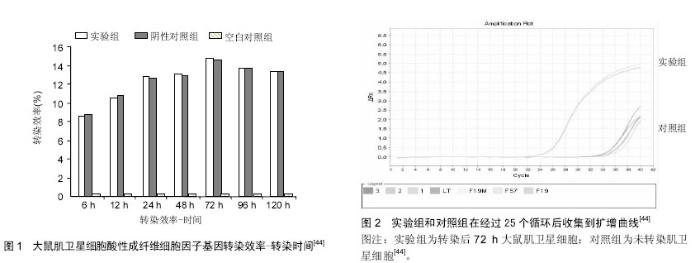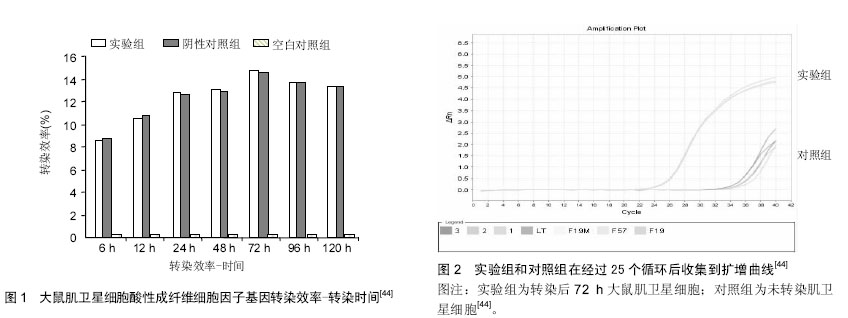Chinese Journal of Tissue Engineering Research ›› 2015, Vol. 19 ›› Issue (37): 6031-6036.doi: 10.3969/j.issn.2095-4344.2015.37.023
Previous Articles Next Articles
Delayed onset muscle soreness and muscle satellite cells: repair of skeletal muscle injury
Zhang Xiang, Chai Zhi-ming, Zhao Li
- Department of Physical Education, Xinzhou Teachers University, Xinzhou 034000, Shanxi Province, China
-
Online:2015-09-10Published:2015-09-10 -
About author:Zhang Xiang, Professor, Department of Physical Education, Xinzhou Teachers University, Xinzhou 034000, Shanxi Province, China -
Supported by:Key Disciplines Project of Xinzhou Teachers University, No. xk201403
CLC Number:
Cite this article
Zhang Xiang, Chai Zhi-ming, Zhao Li. Delayed onset muscle soreness and muscle satellite cells: repair of skeletal muscle injury[J]. Chinese Journal of Tissue Engineering Research, 2015, 19(37): 6031-6036.
share this article
| [1] 范秀彬,陈晓云,梁林花,等.采用爱维治治疗速滑运动员延迟性肌肉酸痛的效果观察[J].中国运动医学杂志,2004,23(3): 302-303 [2] Pumpa KL, Fallon KE, Bensoussan A, et al. The effects of Lyprinol(?) on delayed onset muscle soreness and muscle damage in well trained athletes: a double-blind randomised controlled trial.Complement Ther Med. 2011;19(6):311-318. [3] 田野,马鹏鹏,郭时杰,等.连续运动后延迟性肌肉损伤的适应性研究[J].中国运动医学杂志,2003,22(2): 138-142. [4] 何坚,王芗斌,廖军,等.延迟性肌肉酸痛机制及中医药防治研究进展[J].福建中医药,2008,39(4): 59-60. [5] Nierobisz LS, Cheatham B,Buehrer B, et al. High-content screening of human primary muscle satellite cells for new therapies for muscular atrophy/dystrophy.Curr Chem Genomics Transl Med. 2013;3(7):21-29. [6] MAURO A.Satellite cell of skeletal muscle fibers. J Biophys Biochem Cytol.1961;(9):493-495. [7] Zammit PS, Partridge TA, Yablonka-Reuveni Z. The skeletal muscle satellite cell: the stem cell that came in from the cold.J Histochem Cytochem.2006;54(11):1177-1191. [8] 刘蓓蓓,卢健.SIRT1对骨骼肌卫星细胞和骨骼肌再生的影响[J].中国运动医学杂志,2013,32(3): 275-280. [9] Rhoads RP, Johnson RM, Rathbone CR, et al. Satellite cell-mediated angiogenesis in vitro coincides with a functional hypoxia-inducible factor pathway.Am J Physiol Cell Physiol. 2009;296(6):1321-1328. [10] Kook SH, Son YO, Lee KY, et al. Hypoxia affects positively the proliferation of bovine satellite cells and their myogenic differentiation through up-regulation of MyoD.Cell Biol Int. 2008;32(8):871-878. [11] Armstrong RB, Warren GL,Warren JA. Mechanisms of exercise-induced muscle fibre injury.Sports Med. 1991;12(3): 184-207. [12] Abraham WM.Factors in delayed muscle soreness.Med Sci Sports.1977;9(1):11-20. [13] Dannecker EA, Koltyn KF, Riley JL 3rd, et al. The influence of endurance exercise on delayed onset muscle soreness.J Sports Med Phys Fitness.2002;42(4):458-465. [14] Yu JG, Thornell LE. Desmin and actin alterations in human muscles affected by delayed onset muscle soreness: a high resolution immunocytochemical study.Histochem Cell Biol. 2002;118(2):171-179. [15] 郝春丽,杨隽,张晓军.延迟性肌肉酸痛的发生机制和防治措施[J].黑龙江医药科学,2013,36(1): 100-101. [16] 李世成,吴维,杨则宜.运动后骨骼肌微结构的损伤及修复与蛋白质补充[J].中国运动医学杂志,2004,23(2):216-219 [17] 王军,赵晏.肌肉延迟性酸痛的神经生物学机制研究进展[J].生理科学进展,2008,39(4): 365-367. [18] Hollinger K, Gardan-Salmon D, Santana C, et al. Rescue of dystrophic skeletal muscle by PGC-1α involves restored expression of dystrophin-associated protein complex components and satellite cell signaling.Am J Physiol Regul Integr Comp Physiol. 2013;305(1):13-23. [19] 裴艳宏,刘坤祥.骨骼骨骼肌卫星细胞体外培养及鉴定方法进展[J].临床合理用药杂志,2013,6(23): 178-179. [20] 张蔚菁,贾懿劼,田京.骨骼肌卫星细胞增殖及分化影响因素研究进展[J].国际骨科学杂志,2013,34(2): 104-106. [21] Sirabella D,De Angelis L,Berghella L.Sources for skeletal muscle repair: from satellite cells to reprogramming.J Cachexia Sarcopenia Muscle.2013;4(2):125-136. [22] 陈从波,姚启盛,王卫民,等.骨骼骨骼肌卫星细胞纯化及培养的实验研究[J].实用医学杂志,2006,22(7): 760-762. [23] 赵燕,管武太.大鼠骨骼骨骼肌卫星细胞体外原代培养的试验研究[J].山西农业大学学报,2007,27(3): 312-314. [24] 夏家红,谢艾妮,徐磊,等.大鼠骨骼骨骼肌卫星细胞体外培养的实验研究[J].中华实验外科杂志,2005,22(2): 214-215. [25] 汪茜,王明新,蒲传强.小鼠骨骼骨骼肌卫星细胞的原代培养和鉴定[J].解放军医学杂志,2009,34(2): 203-205. [26] Lepper C, Partridge TA, Fan CM. An absolute requirement for Pax7-positive satellite cells in acute injury-induced skeletal muscle regeneration. Development. 2011;138(17): 3639-3646. [27] 仍飞,刘子青,袁海平,等.机械生长因子对骨骼骨骼肌卫星细胞增殖及MGFmRNA表达的影响[J].临床医学工程,2012,19(1): 18-21 [28] Mu X, Urso ML, Murray K, et al. Relaxin regulates MMP expression and promotes satellite cell mobilization during muscle healing in both young and aged mice.Am J Pathol. 2010;177(5):2399-2410. [29] Boppart MD, De Lisio M, Zou K, et al. Defining a role for non-satellite stem cells in the regulation of muscle repair following exercise.Front Physiol.2010;5(4):310. [30] Farup J, Rahbek SK, Riis S, et al. Influence of exercise contraction mode and protein supplementation on human skeletal muscle satellite cell content and muscle fiber growth.J Appl Physiol (1985).2014;117(8):898-909. [31] Harthan LB, McFarland DC, Velleman SG. The effect of syndecan-4 and glypican-1 expression on age-related changes in myogenic satellite cell proliferation, differentiation, and fibroblast growth factor 2 responsiveness.Comp Biochem Physiol A Mol Integr Physiol. 2013;166(4):590-602. [32] Fornaro M, Hinken AC, Needle S, et al.Mechano-growth factor peptide, the COOH terminus of unprocessed insulin-like growth factor 1, has no apparent effect on myoblasts or primary muscle stem cells.Am J Physiol Endocrinol Metab.2014;306(2):150-156. [33] Bowers DC, Fan S, Walter KA, et al. Scatter factor/hepatocyte growth factor protects against cytotoxic death in human glioblastoma via phosphatidylinositol 3-kinase-and AKT-dependent pathways.Cancer Res. 2000;60(15): 4277-4283. [34] Chakravarthy MV, Abraha TW, Schwartz RJ, et al. Insulin-like growth factor-I extends in vitro replicative life span of skeletal muscle satellite cells by enhancing G1/S cell cycle progression via the activation of phosphatidylinositol 3'-kinase/Akt signaling pathway.J Biol Chem.2000; 275(46): 35942-35952. [35] Tanaka Y, Yamaguchi A, Fujikawa T, et al.Expression of mRNA for specific fibroblast growth factors associates with that of the myogenic markers MyoD and proliferating cell nuclear antigen in regenerating and overloaded rat plantaris muscle. Acta Physiol (Oxf). 2008;194(2):149-159. [36] Marshall PA, Williams PE, Goldspink G. Accumulation of collagen and altered fiber-type ratios as indicators of abnormal muscle gene expression in the mdx dystrophic mouse.Muscle Nerve.1989;12(7):528-537. [37] Tatsumi R, Hattori A, Ikeuchi Y, et al. Release of hepatocyte growth factor from mechanically stretched skeletal muscle satellite cells and role of pH and nitric oxide.Mol Biol Cell. 2002;13(8):2909-2918. [38] Alli NS, Yang EC, Miyake T, et al. Signal-dependent fra-2 regulation in skeletal muscle reserve and satellite cells. Cell Death Dis.2013;27(4):692. [39] Park SY, Yun Y, Kim MJ,et al.Myogenin is a positive regulator of MEGF10 expression in skeletal muscle.Biochem Biophys Res Commun.2014;450(4):1631-1637. [40] Cusella-De Angelis MG, Lyons G, Sonnino C, et al. MyoD, myogenin independent differentiation of primordial myoblasts in mouse somites. J Cell Biol. 1992;116(5):1243-1255. [41] Krause MP, Moradi J,Coleman SK, et al. A novel GFP reporter mouse reveals Mustn1 expression in adult regenerating skeletal muscle, activated satellite cells and differentiating myoblasts.Acta Physiol (Oxf).2013;208(2):180-190. [42] 赵清石,江新梅,鞠浩.调节骨骼肌再生过程的分泌因子[J].中国老年学杂志,2007,27(6): 598. [43] Zanou N, Gailly P. Skeletal muscle hypertrophy and regeneration: interplay between the myogenic regulatory factors (MRFs) and insulin-like growth factors (IGFs) pathways. Cell Mol Life Sci.2013;70(21):4117-4130. [44] 杨绍安,蔡进奎,周初松,等.酸性成纤维细胞因子基因体外转染骨骼肌卫星细胞[J].中国组织工程研究,2013,17(15): 2761-2768. [45] 董少红,张鹏,温隽珉,等.酸性成纤维细胞生长因子促进兔骨骼骨骼肌卫星细胞生长的研究[J].中华医学杂志,2007,87(17): 1195-1198. [46] Katagiri T, Akiyama S Namiki M, et al. Bone morphogenetic protein-2 inhibits terminal differentiation of myogenic cells by suppressing the transcriptional activity of MyoD and myogenin. Exp Cell Res.1997;230(2):342-351. [47] Kocamis H, McFarland DC, Killefer J. Temporal expression of growth factor genes during myogenesis of satellite cells derived from the biceps femoris and pectoralis major muscles of the chicken.J Cell Physiol.2001;186(1):146-152. [48] Martin JF, Li L, Olson EN. Repression of myogenin function by TGF-beta 1 is targeted at the basic helix-loop-helix motif and is independent of E2A products.J Biol Chem. 1992; 267(16):10956-10960. [49] Greene EA, Allen RE. Growth factor regulation of bovine satellite cell growth in vitro. J Anim Sci.1991;69(1):146-152. [50] Macaluso F, Myburgh KH. Current evidence that exercise can increase the number of adult stem cells.J Muscle Res Cell Motil.2012;33(3-4):187-198. [51] 史仍飞,危小焰,卞玉华.机械牵拉刺激对大鼠骨骼骨骼肌卫星细胞增殖的影响[J].体育科学,2007,27(5): 74-76. [52] 陈霓,于新凯.下坡跑后大鼠腓肠肌成肌调节因子的变化[J].中国应用生理学杂志,2010,(4): 420-422. [53] 李稚,田野.离心运动及补充谷氨酰胺影响大鼠腓肠肌总蛋白和胰岛素样生长因子含量的变化[J].中国组织工程研究与临床康复,2007,11(30): 6001-6005. [54] 李世成,李跃纲,王启荣,等.补充活性肽对大强度离心运动后大鼠骨骼肌肝细胞生长因子表达的影响[J].西安体育学院学报,2008, 25(1): 53-57. [55] 于新凯,石鹏超,左群.运动性损伤后大鼠骨骼肌转化生长因子- β1变化的研究[J].中国体育科技,2011,(5): 128-133. [56] 潘同斌,孙文杰,毛杉杉,等.急性低氧及力竭运动对大鼠骨骼肌成肌调节因子MyoD及myogenin基因表达的影响[J].北京体育大学学报,2010,33(1):45-47. [57] 宋卫红,汤长发,刘文锋.离心运动对大鼠骨骼肌细胞凋亡和增殖的影响[J].中国应用生理学杂志,2013,(1): 86-90. [58] 董学亮,成羿,章婵娟.卫星细胞在骨骼肌修复中的研究进展[J]中华中医药学刊,2011,29(3): 655-658. [59] 赵新娟,杜海平,王植元,等.骨骼肌卫星细胞与延迟性肌肉酸痛的潜在联系[J]湖北体育科技,2015,34(2):142-156. |
| [1] | Li Dadi, Zhu Liang, Zheng Li, Zhao Fengchao. Correlation of total knee arthroplasty efficacy with satisfaction and personality characteristics [J]. Chinese Journal of Tissue Engineering Research, 2021, 25(9): 1346-1350. |
| [2] | Wei Wei, Li Jian, Huang Linhai, Lan Mindong, Lu Xianwei, Huang Shaodong. Factors affecting fall fear in the first movement of elderly patients after total knee or hip arthroplasty [J]. Chinese Journal of Tissue Engineering Research, 2021, 25(9): 1351-1355. |
| [3] | Lü Zhen, Bai Jinzhu. A prospective study on the application of staged lumbar motion chain rehabilitation based on McKenzie’s technique after lumbar percutaneous transforaminal endoscopic discectomy [J]. Chinese Journal of Tissue Engineering Research, 2021, 25(9): 1398-1403. |
| [4] | Huang Dengcheng, Wang Zhike, Cao Xuewei. Comparison of the short-term efficacy of extracorporeal shock wave therapy for middle-aged and elderly knee osteoarthritis: a meta-analysis [J]. Chinese Journal of Tissue Engineering Research, 2021, 25(9): 1471-1476. |
| [5] | Gao Yan, Zhao Licong, Zhao Hongzeng, Zhu Yuanyuan, Li Jie, Sang Deen. Alteration of low frequency fluctuation amplitude at brain-resting state in patients with chronic discogenic low back pain [J]. Chinese Journal of Tissue Engineering Research, 2021, 25(8): 1160-1165. |
| [6] | Zhao Zhongyi, Li Yongzhen, Chen Feng, Ji Aiyu. Comparison of total knee arthroplasty and unicompartmental knee arthroplasty in treatment of traumatic osteoarthritis [J]. Chinese Journal of Tissue Engineering Research, 2021, 25(6): 854-859. |
| [7] | Zhang Nianjun, Chen Ru. Analgesic effect of cocktail therapy combined with femoral nerve block on total knee arthroplasty [J]. Chinese Journal of Tissue Engineering Research, 2021, 25(6): 866-872. |
| [8] | Wu Gang, Chen Jianwen, Wang Shilong, Duan Xiaoran, Liu Haijun, Dong Jianfeng. Simple HyProCure subtalar stabilization in treatment of adolescent flexible flatfoot combined with painful accessory navicular bone [J]. Chinese Journal of Tissue Engineering Research, 2021, 25(6): 901-905. |
| [9] | Li Yan, Wang Pei, Deng Donghuan, Yan Wei, Li Lei, Jiang Hongjiang. Electroacupuncture for pain control after total knee arthroplasty: a meta-analysis [J]. Chinese Journal of Tissue Engineering Research, 2021, 25(6): 957-963. |
| [10] | Li Quanxi, Shen Yu, Wan Wei, Sun Shanzhi. Changes of abdominal wall mechanics and pain after tension-free inguinal hernia repair with polypropylene mesh [J]. Chinese Journal of Tissue Engineering Research, 2021, 25(4): 548-552. |
| [11] | Wang Xiaofei, Teng Xueren, Cong Linyan, Zhou Xu, Ma Zhenhua. Herbert screw internal fixation for treating adult osteochondritis dissecans of the knees [J]. Chinese Journal of Tissue Engineering Research, 2021, 25(3): 397-402. |
| [12] | Yang Wei, Chen Zehua, Yi Zhiyong, Huang Xudong, Han Qingmin, Zhang Ronghua. Effectiveness of intra-articular injection of hyaluronic acid versus placebo in the treatment of early and mid-stage knee osteoarthritis: a Meta-analysis based on randomized, double-blind, controlled, clinical trials [J]. Chinese Journal of Tissue Engineering Research, 2021, 25(23): 3760-3766. |
| [13] | Liu Chang, Li Datong, Liu Yuan, Kong Lingbo, Guo Rui, Yang Lixue, Hao Dingjun, He Baorong. Poor efficacy after vertebral augmentation surgery of acute symptomatic thoracolumbar osteoporotic compression fracture: relationship with bone cement, bone mineral density, and adjacent fractures [J]. Chinese Journal of Tissue Engineering Research, 2021, 25(22): 3510-3516. |
| [14] | Jiang Hai, Yu Yu, Liu Zhicheng, Zhang Qiliang. Treatment of plantar fasciitis with extracorporeal shock wave and corticosteroid injection: comparison of plantar pressure and gait [J]. Chinese Journal of Tissue Engineering Research, 2021, 25(21): 3286-3291. |
| [15] | Deng Zhibo, Li Zhi, Wu Yahong, Mu Yuan, Mu Yuexi, Yin Liangjun. Local infiltration anesthesia versus femoral nerve block for pain control and safety after total knee arthroplasty: a meta-analysis [J]. Chinese Journal of Tissue Engineering Research, 2021, 25(21): 3401-3408. |
| Viewed | ||||||
|
Full text |
|
|||||
|
Abstract |
|
|||||

